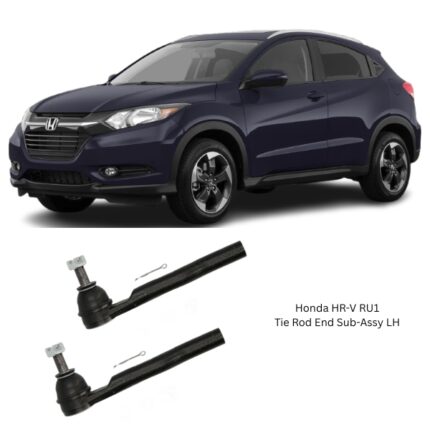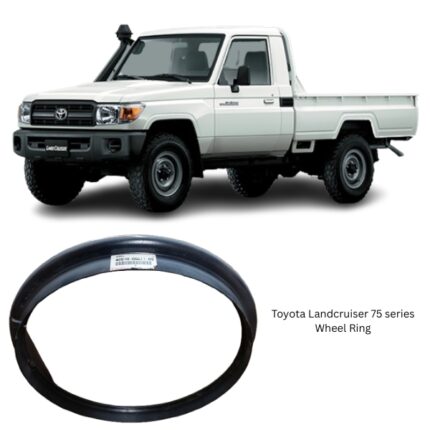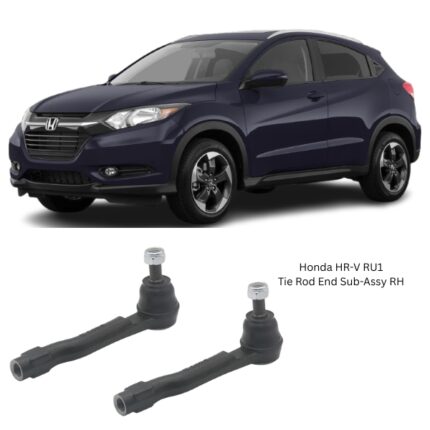-9%
Get Honda HR-V RU1 Tie Rod End Sub-Assy RH 53540-T7A-003 in Kenya
The Tie Rod End Sub-Assembly RH (Right-Hand Side) is a critical mechanical link in the steering system of most modern vehicles. It is responsible for connecting the right-hand side of the steering rack or center link to the steering knuckle, directly translating steering input into lateral wheel movement. As part of the outer steering linkage, this component ensures that the vehicle’s wheels respond accurately and consistently to the driver’s steering commands.
Functioning within a highly dynamic and often harsh environment, the tie rod end must be both precise and durable. It plays a significant role in the safe handling, alignment, and tire wear characteristics of the vehicle. The right-hand tie rod end is matched with its left-hand counterpart to provide symmetrical steering response across both front wheels.
Functional Overview
The tie rod end serves as the pivot point for steering linkage at the wheel end of the system. It combines rotation and articulation to allow the suspension to move independently while maintaining full control of wheel alignment and turning motion.
Primary Functions:
-
Transmits Steering Input to the Right Front Wheel
Converts the linear motion of the steering rack into the angular motion required to turn the right wheel. -
Maintains Precise Wheel Alignment
Plays a key role in keeping the toe angle within factory specifications, which is essential for directional stability and even tire wear. -
Accommodates Suspension Movement
The built-in ball joint allows for vertical travel of the wheel without compromising steering input or alignment. -
Enhances Handling and Responsiveness
Ensures that steering remains tight, predictable, and accurate—especially at high speeds or under load.
Design and Components
The Tie Rod End Sub-Assy RH is typically a compact unit that consists of several precision-machined components working together to ensure both strength and flexibility.
Core Components:
-
Ball Stud
A polished, hardened steel stud with a spherical end seated within the socket housing. It connects to the steering knuckle via a tapered and threaded shank. -
Socket Housing
Houses the ball end of the stud, allowing multi-directional movement while holding the stud firmly under load. -
Bearing Surface or Liner
Made of polymer, Teflon, or metal alloys, providing a low-friction interface that supports rotation and swing. -
Dust Boot (Grease Seal)
Protects internal components from dirt, moisture, and road contaminants while retaining the internal lubricant. -
Threaded Shaft or Adjusting Sleeve Connection
Connects to the inner tie rod or center link, allowing toe adjustments during wheel alignment. -
Grease Fitting (on Serviceable Units)
Allows for periodic lubrication in non-sealed models.
Materials and Durability
Given the high-stress and high-impact nature of steering systems, tie rod ends are constructed from materials designed to withstand continuous use and environmental exposure.
-
Ball Stud: Case-hardened or forged steel for high tensile strength and wear resistance.
-
Housing: Forged or machined steel or cast iron, capable of absorbing lateral forces and providing a rigid foundation.
-
Boot: High-strength rubber or synthetic elastomers resistant to heat, oil, and abrasion.
-
Liner/Bearing: Self-lubricating polymers or treated metals designed for smooth articulation and long life.
Common Designs
Depending on the steering system layout, tie rod ends may vary slightly in design:
-
Thread-In Type
Screws onto the end of an inner tie rod, allowing length adjustment during alignment. -
Bolt-On or Stud Type
Pressed or bolted into the steering knuckle. -
Sealed vs. Greaseable
Sealed units are maintenance-free, while greaseable types allow for periodic service. -
Right-Hand Specific Geometry
The RH tie rod end is designed with geometry and threading optimized for the right-hand side of the vehicle, ensuring proper movement and alignment.
Symptoms of a Failing Tie Rod End (RH)
Like all mechanical components subject to movement, wear, and stress, the right-hand tie rod end can degrade over time. Failure of this component can have serious consequences on handling and tire wear.
Signs of Wear or Failure:
-
Steering Looseness or Play
The steering wheel may feel vague or respond poorly due to slack in the joint. -
Clunking or Knocking Noises
Particularly when turning or driving over uneven surfaces, due to excess movement in the joint. -
Uneven Tire Wear
Premature wear on the inside or outside edge of the right tire can indicate misalignment caused by joint play. -
Vehicle Pulling to the Right
The car may drift or veer right, particularly during acceleration or braking. -
Visible Damage
Torn or missing dust boots, leaking grease, or rust on the joint. -
Steering Wheel Vibration
Especially noticeable at high speeds if the right-side steering linkage is loose or worn.
Inspection and Diagnosis
Tie rod ends should be regularly inspected during routine maintenance, especially when aligning wheels, replacing tires, or servicing suspension components.
Inspection Techniques:
-
Visual Check: Inspect the dust boot for tears, and check for rust or leaks.
-
Manual Movement: With the vehicle lifted, check for play by attempting to move the wheel laterally.
-
Use of Pry Bar: Apply leverage to the tie rod to feel for any internal movement.
-
Test Drive: Listen for unusual noises or steering irregularities.
Installation and Replacement
Replacing a worn or damaged RH Tie Rod End Sub-Assembly is relatively straightforward but must be done carefully to preserve alignment.
General Steps:
-
Raise and Secure the Vehicle
Safely lift the car and support it with jack stands. -
Remove the Right Front Wheel
Expose the steering knuckle and tie rod end. -
Loosen the Lock Nut
On the inner tie rod or adjusting sleeve. -
Separate the Tie Rod from the Steering Knuckle
Use a tie rod separator or puller to remove the tapered stud. -
Unscrew the Old Tie Rod End
Count the number of turns to maintain approximate alignment. -
Install the New Tie Rod End
Thread it in the same number of turns and tighten the lock nut. -
Reconnect to Knuckle and Torque Properly
Secure the stud with a new castle nut and cotter pin where applicable. -
Perform a Professional Alignment
Essential after installation to ensure proper toe settings and prevent tire wear.
Maintenance Recommendations
-
Inspect with Every Oil Change
Regular checks help detect early signs of wear. -
Lubricate If Applicable
If the unit has a grease fitting, apply high-quality suspension grease periodically. -
Avoid Rough Driving Habits
Sudden impacts, curbs, or off-road conditions accelerate wear. -
Replace in Pairs if Necessary
If one tie rod end has failed, the other may not be far behind.
Follow us on Facebook for more parts.





Reviews
Clear filtersThere are no reviews yet.